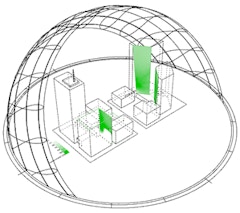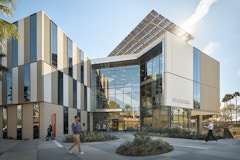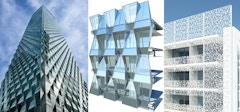
End-of-Life Challenges in Facade Design
In recent decades, there has been increased attention to reduce the operational energy performance of buildings. Stringent legislation on building

In recent decades, there has been increased attention to reduce the operational energy performance of buildings. Stringent legislation on building

Facades developed in response to climactic factors increase performance and human comfort while reducing energy loads. A single building envelope

Buildings have a considerable impact on the environment, and it is crucial to consider environmental and energy performance in building design.

For architects, designers, engineers, manufacturers, consultants, and owners' representatives interested in methods for designing high-performance facades.

With the desire for more sustainable construction and reduced embodied energy, mass timber is being explored for building structures. For medium and

Climate change and related thermal issues, draw attention to the impact of green facades and roofs on energy savings and thermal comfort. Besides, by

Designing a sustainable rainscreen wall assembly has become an essential part of most new construction projects. Industry principles and energy codes

This paper explores the architectural shape optimization of typical housing typologies: slab and high-rise residential buildings to reduce primary
Integrated management of commercial lighting, heating, ventilation and air conditioning systems is considered as one of the most promising building

Ivan Lee, a Building Science Consultant at Morrison Hershfield recognizes the importance of mitigating thermal bridging to meet low energy targets for buildings. He points out that many jurisdictions are starting to incorporate thermal bridging into their codes and standards

High performance can be defined as “a building that integrates and optimizes all major high-performance building attributes, including energy

This paper will address the potential of ornamental architectural terracotta surfaces to mitigate the effects of climate fluctuations that will

Silicone materials have a long history in high performance building projects. Known for durability, they can reduce a building’s carbon footprint by

Dr. Helen Sanders adds context to the Simulation vs. Reality dialogue.

Photovoltaics (PV) have been utilized in buildings for decades, especially in Europe where legislative support has largely driven the market. With


During the particularly cold first months of 1977 President Jimmy Carter, in what some call “The Sweater Speech,” famously noted how much energy


Facade design is a key component of architectural expression, and increasingly a key design consideration due to growing importance of factors like: